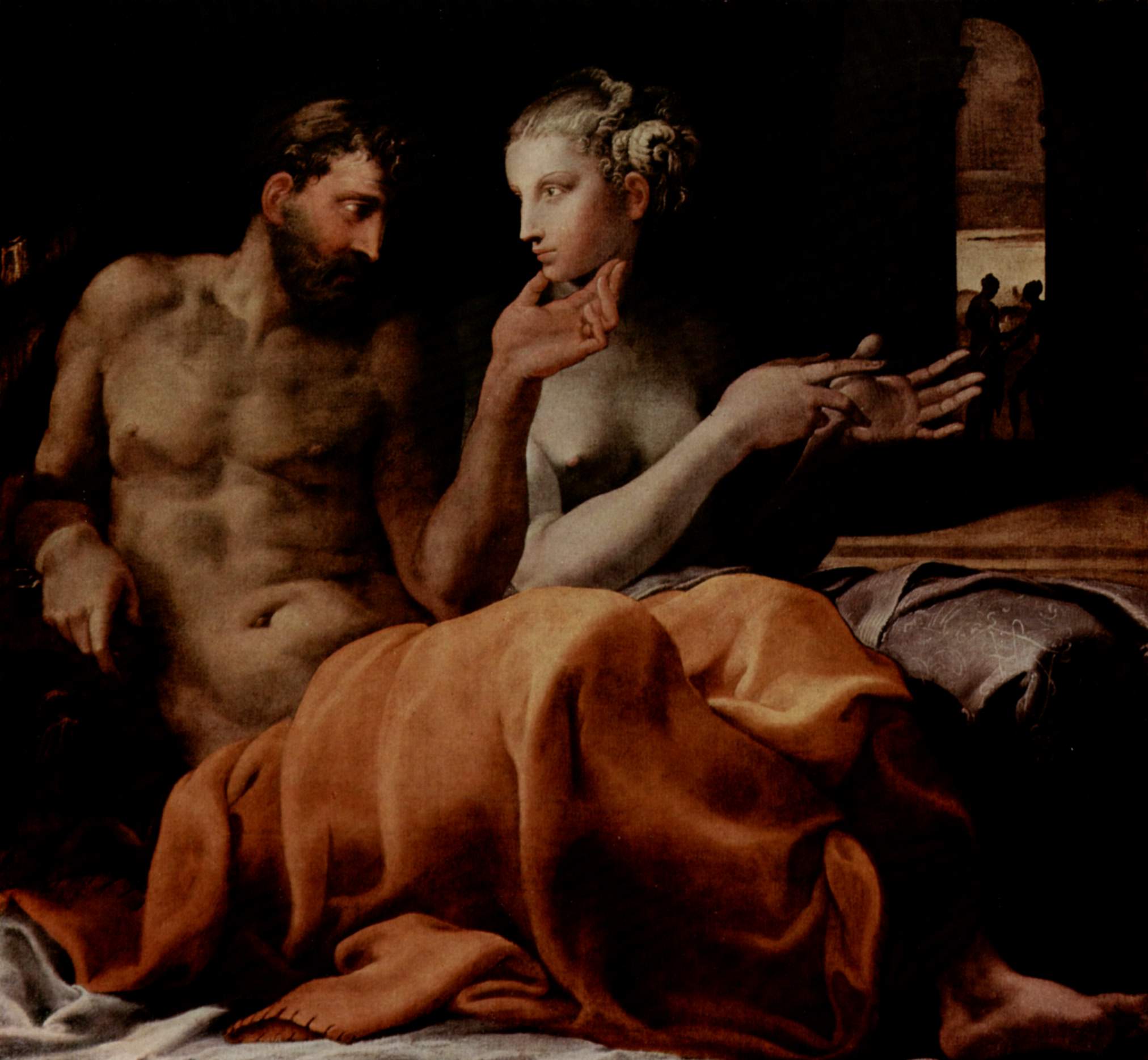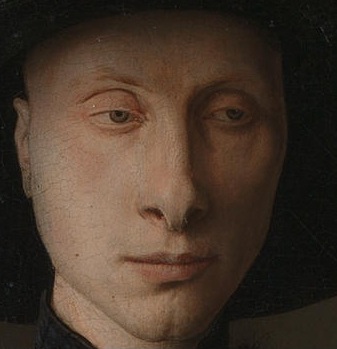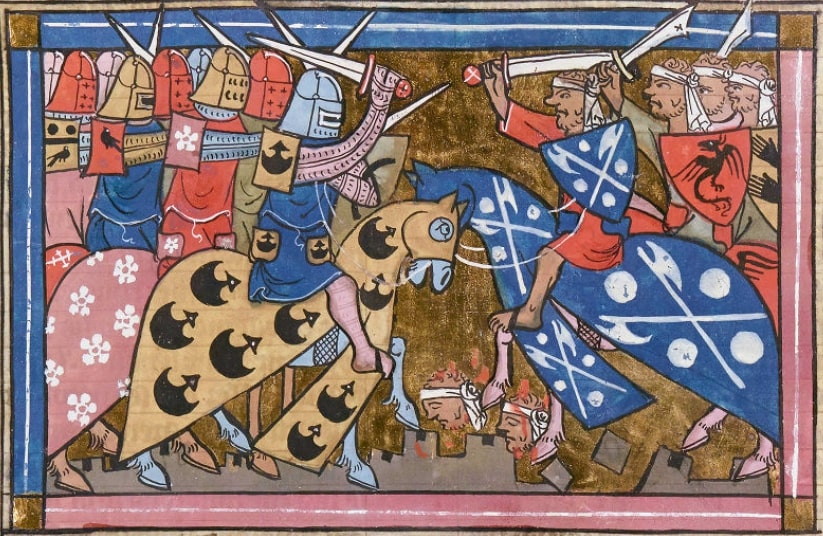|
Fidelity (art And Symbolism)
Fidelity when personified in Western art stands for the secular aspect of Faith, or the trust that exists between a master and servant, or in family relationships. Fidelity is often represented as a woman, shown holding a golden seal and a key, but may also be represented by a dog. Fidelity may be shown alone, or may be accompanied by a dog, a symbol of not only faithfulness but also fidelity.Hall, James. Dictionary of Subjects & Symbols in Art. Rev. ed. United States of America: Westview Press, 1979. In the Renaissance, Penelope or Griselda might also stand for fidelity. Fidelity is not in the usual lists of the seven virtues, though it may sometimes be included in such groupings. The plant myrtle (''Myrtus'') has been associated with fidelity, and hence used in weddings, from Roman times to the present, and wreathed crowns of myrtle may be found in art. Fidelity in allegory A dog, when included in an allegorical painting, portrays the attribute of fidelity personified. The deep ... [...More Info...] [...Related Items...] OR: [Wikipedia] [Google] [Baidu] |
Fidelity
Fidelity is the quality of faithfulness or loyalty. Its original meaning regarded duty in a broader sense than the related concept of ''fealty''. Both derive from the Latin word ''fidēlis'', meaning "faithful or loyal". In the City of London financial markets it has traditionally been used in the sense encompassed in the motto "My word is my bond". Audio and electronics In audio, "fidelity" denotes how accurately a copy reproduces its source. In the 1950s, the terms " high fidelity" or "hi-fi" were popularized for equipment and recordings which exhibited more accurate sound reproduction. For example, a worn gramophone record will have a lower fidelity than one in good condition, and a recording made by a low budget record company in the early 20th century is likely to have significantly less audio fidelity than a good modern recording. Similarly in electronics, fidelity refers to the correspondence of the output signal to the input signal, rather than sound quality, as i ... [...More Info...] [...Related Items...] OR: [Wikipedia] [Google] [Baidu] |
Penelope
Penelope ( ; Ancient Greek: Πηνελόπεια, ''Pēnelópeia'', or el, Πηνελόπη, ''Pēnelópē'') is a character in Homer's ''Odyssey.'' She was the queen of Ithaca and was the daughter of Spartan king Icarius and naiad Periboea. Penelope is known for her fidelity to her husband Odysseus, despite the attention of more than a hundred suitors during his absence. In one source, Penelope's original name was Arnacia or Arnaea. Etymology Glossed by Hesychius as "some kind of bird" (today arbitrarily identified with the Eurasian wigeon, to which Linnaeus gave the binomial ''Anas penelope''), where () is a common Pre-Greek suffix for predatory animals; however, the semantic relation between the proper name and the gloss is not clear. In folk etymology, () is usually understood to combine the Greek word (), "weft", and (), "face", which is considered the most appropriate for a cunning weaver whose motivation is hard to decipher. Robert S. P. Beekes believed the ... [...More Info...] [...Related Items...] OR: [Wikipedia] [Google] [Baidu] |
Griselda (folklore)
Griselda (anglicised to Grizzel and similar forms) is a figure in European folklore noted for her patience and obedience. In literature In the most famous version of the Griselda tale, written by Giovanni Boccaccio , Griselda marries Gualtieri, the Marquis of Saluzzo, who tests her by declaring that their two children—a son and a daughter—must both be put to death. Griselda gives both of them up without protest, but Gualtieri does not actually kill the children, instead sending them away to Bologna to be raised. In a final test, Gualtieri publicly renounces Griselda, claiming he had been granted papal dispensation to divorce her and marry a better woman; Griselda goes to live with her father. Some years later, Gualtieri announces he is to remarry and recalls Griselda as a servant to prepare the wedding celebrations. He introduces her to a twelve-year-old girl he claims is to be his bride but who is really their daughter; Griselda wishes them well. At this, Gualtieri reve ... [...More Info...] [...Related Items...] OR: [Wikipedia] [Google] [Baidu] |
Myrtus
''Myrtus'' (commonly called myrtle) is a genus of flowering plants in the family Myrtaceae. It was first described by Swedish botanist Linnaeus in 1753. Over 600 names have been proposed in the genus, but nearly all have either been moved to other genera or been regarded as synonyms. The genus ''Myrtus'' has three species recognised today: *'' Myrtus communis'' – Common myrtle; native to the Mediterranean region in southern Europe *''Myrtus nivellei'' – Saharan myrtle; native to North Africa *'' Myrtus phyllireaefolia'' Description Common myrtle '' Myrtus communis'', the "common myrtle", is native across the Mediterranean region, Macaronesia, western Asia, and the Indian subcontinent. It is also cultivated. The plant is an evergreen shrub or small tree, growing to tall. The leaf is entire, 3–5 cm long, with a fragrant essential oil. The star-like flower has five petals and sepals, and numerous stamens. Petals usually are white. The flower is pollinated by ... [...More Info...] [...Related Items...] OR: [Wikipedia] [Google] [Baidu] |
Allegory
As a literary device or artistic form, an allegory is a narrative or visual representation in which a character, place, or event can be interpreted to represent a hidden meaning with moral or political significance. Authors have used allegory throughout history in all forms of art to illustrate or convey complex ideas and concepts in ways that are comprehensible or striking to its viewers, readers, or listeners. Writers and speakers typically use allegories to convey (semi-)hidden or complex meanings through symbolic figures, actions, imagery, or events, which together create the moral, spiritual, or political meaning the author wishes to convey. Many allegories use personification of abstract concepts. Etymology First attested in English in 1382, the word ''allegory'' comes from Latin ''allegoria'', the latinisation of the Greek ἀλληγορία (''allegoría''), "veiled language, figurative", which in turn comes from both ἄλλος (''allos''), "another, differen ... [...More Info...] [...Related Items...] OR: [Wikipedia] [Google] [Baidu] |
Pliny's Natural History
The ''Natural History'' ( la, Naturalis historia) is a work by Pliny the Elder. The largest single work to have survived from the Roman Empire to the modern day, the ''Natural History'' compiles information gleaned from other ancient authors. Despite the work's title, its subject area is not limited to what is today understood by natural history; Pliny himself defines his scope as "the natural world, or life". It is encyclopedic in scope, but its structure is not like that of a modern encyclopedia. It is the only work by Pliny to have survived, and the last that he published. He published the first 10 books in AD 77, but had not made a final revision of the remainder at the time of his death during the AD 79 eruption of Vesuvius. The rest was published posthumously by Pliny's nephew, Pliny the Younger. The work is divided into 37 books, organised into 10 volumes. These cover topics including astronomy, mathematics, geography, ethnography, anthropology, human physiol ... [...More Info...] [...Related Items...] OR: [Wikipedia] [Google] [Baidu] |
Cesare Ripa
Cesare Ripa (c. 1555, Perugia – Rome) was an Italian iconographer who worked for Cardinal Anton Maria Salviati as a cook and butler. Life Little is known about his life. He was born of humble origin in Perugia about 1555. The exact date of his birth has never been established. He was very active in academic circles as member of the Filomati and the Intronati in Siena, both dedicated to the study of antiquities and of Greek and Latin literature, and the Insensati in his native Perugia. While still very young he went to Rome to work at the court of Cardinal Antonio Maria Salviati. He attended the Accademia degli Incitati the Accademia di San Luca, where he probably met the Dominican mathematician Ignazio Danti, and was introduced into the learned circles of Baroque Rome. In 1593 he published the first edition (without illustrations) of his ''Iconologia''; the work was highly successful, and went through several editions and subsequent translations. In 1598 Ripa was ... [...More Info...] [...Related Items...] OR: [Wikipedia] [Google] [Baidu] |
Arnolfini Portrait
''The Arnolfini Portrait'' (or ''The Arnolfini Wedding'', ''The Arnolfini Marriage'', the ''Portrait of Giovanni Arnolfini and his Wife'', or other titles) is a 1434 oil painting on oak panel by the Early Netherlandish painter Jan van Eyck. It forms a full-length double portrait, believed to depict the Italian merchant Giovanni di Nicolao Arnolfini and his wife, presumably in their residence at the Flemish city of Bruges. It is considered one of the most original and complex paintings in Western art, because of its beauty, complex iconography, geometric orthogonal perspective, and expansion of the picture space with the use of a mirror. According to Ernst Gombrich "in its own way it was as new and revolutionary as Donatello's or Masaccio's work in Italy. A simple corner of the real world had suddenly been fixed on to a panel as if by magic... For the first time in history the artist became the perfect eye-witness in the truest sense of the term". The portrait has been consi ... [...More Info...] [...Related Items...] OR: [Wikipedia] [Google] [Baidu] |
Crusaders
The Crusades were a series of religious wars initiated, supported, and sometimes directed by the Latin Church in the medieval period. The best known of these Crusades are those to the Holy Land in the period between 1095 and 1291 that were intended to recover Jerusalem and its surrounding area from Islamic rule. Beginning with the First Crusade, which resulted in the recovery of Jerusalem in 1099, dozens of Crusades were fought, providing a focal point of European history for centuries. In 1095, Pope Urban II proclaimed the First Crusade at the Council of Clermont. He encouraged military support for Byzantine emperor AlexiosI against the Seljuk Turks and called for an armed pilgrimage to Jerusalem. Across all social strata in western Europe, there was an enthusiastic response. The first Crusaders had a variety of motivations, including religious salvation, satisfying feudal obligations, opportunities for renown, and economic or political advantage. Later crusades were ... [...More Info...] [...Related Items...] OR: [Wikipedia] [Google] [Baidu] |
Iconography
Iconography, as a branch of art history, studies the identification, description and interpretation of the content of images: the subjects depicted, the particular compositions and details used to do so, and other elements that are distinct from artistic style. The word ''iconography'' comes from the Greek ("image") and ("to write" or ''to draw''). A secondary meaning (based on a non-standard translation of the Greek and Russian equivalent terms) is the production or study of the religious images, called "icons", in the Byzantine and Orthodox Christian tradition (see Icon). This usage is mostly found in works translated from languages such as Greek or Russian, with the correct term being "icon painting". In art history, "an iconography" may also mean a particular depiction of a subject in terms of the content of the image, such as the number of figures used, their placing and gestures. The term is also used in many academic fields other than art history, for example semioti ... [...More Info...] [...Related Items...] OR: [Wikipedia] [Google] [Baidu] |







